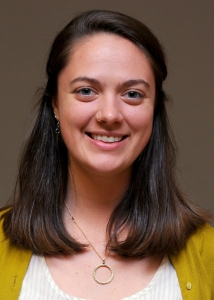 By Emilie Bouvier
By Emilie Bouvier
Okay, so I love waiting, I really do. There’s something about the practice and ritual of waiting that feeds the soul. But I’m also really anxious to dig into the reality that were all waiting for – the incarnation, God born among us. So, I’m going to skip ahead a little and dive into our incarnational promise a week early.
I know, I know. But, I think Jesus came last year too, so we’re good, right?
I’ve been thinking a lot about incarnation, because I’ve been increasingly aware of what a scary yet profound promise it is to see God entering into the messy, complex realities of our incarnated lives. In our current moment, I feel we are hyper-aware of the big picture issues we face – systems and structures that harm, a political environment fueled off racism and unabashed greed, a deteriorating climate, and the list goes on. How on earth does Jesus break in, in all Christ’s transformative power and utter human-ness?
“What does God’s breaking-in, challenging, transforming, healing look like embodied in us?”
Yet, somehow we hold to this promise and, perhaps with a bit of fear and trembling, recognize that we too are a part of this incarnational reality. We don’t remain unchanged or let off the hook. If we’re at all serious about how God works in-and-through the world, we must recognize that part of that happens in-and-through us. It’s going to be beautifully messy and imperfect, and it’s going to challenge and transform us.
LAST WEEK I SAT a couple rows back from two pews full of Bishops at the installation service for Rev. Dr. Curtiss DeYoung, assuming the role of CEO of the Minnesota Council of Churches (MCC). Waves of emotion welled up in me as I saw images of MCC’s work over the years flash across the screen – Blessed Ramadan signs and Iftar meals, a historic press conference of judicatory leaders speaking out boldly against the Muslim ban early this year, congregations hearing new voices through the Black Clergy Speakers Bureau, presence and solidarity with Dar Al-Farooq in the wake of the bombing last summer. This is incarnational ministry.
I find myself circling back to this: What does God’s breaking-in, challenging, transforming, healing look like embodied in us?
For the ecumenical assembly gathered there that evening, there were some pretty clear pictures offered up. Three sermonic charges to CEO Curtiss may just as well have been charges to all of us who minister as a part of this greater church.
- Elona Street Stewart, a native leader and Ruling Elder in the Presbyterian Church, called on us to recognize the stolen land on which we stand, to include and lift up indigenous voices, and to recognize the multiplicity of tribes and stories within the native community.
- Sindy Morales Garcia, program associate at Wilder and a young Latina voice, charged us to ir a la frontera, to go to the borderland, willing to being de-centered and to stand at the margins with recent immigrants.
- Dee McIntosh, millennial African-American pastor of Lighthouse Church, preached a profound word on the waters of Revelation: that we ought to be more like the water in the neighboring villages – water that is hot for healing or cool for drinking – but we cannot be lukewarm.
These are about as profoundly incarnational charges as I’ve heard.
“Theologians have long recognized how stained glass speaks to our incarnational reality. The design is only possible when the divine light meets the physical material of lead and glass.”
Retiring CEO Peg Chemberlin also spoke, as she passes her role on to Curtiss DeYoung – a leader whose leadership mostly looks like shining light on others, getting out of the way, and getting young people of color into leadership. Her charge recognized and reflected this commitment, as she added these words to the mix: “Increasingly the world is splintered into self-interest shards, none of which can carry a commitment to the common good. In such times, your job is to gently build those shards of many colors into the stained glass window of hope for the future.”
This vibrant image resounded with what I know to be true of stained glass – that theologians have long recognized how it speaks to our incarnational reality. The design is only possible when the divine light meets the physical material of lead and glass; that meeting point of holiness and tangible reality is the point of illumination.
May our lives and vocations, in this season especially, seek to minister at this incarnational intersection.
